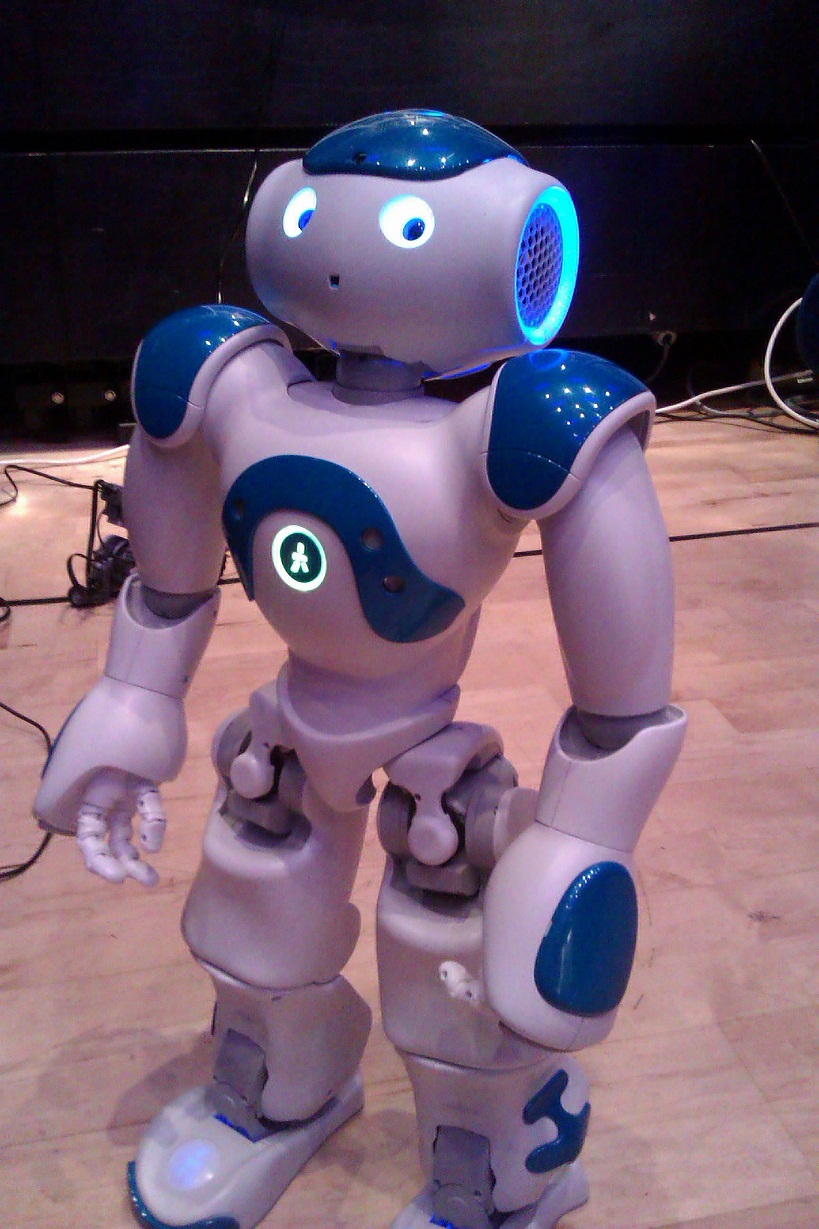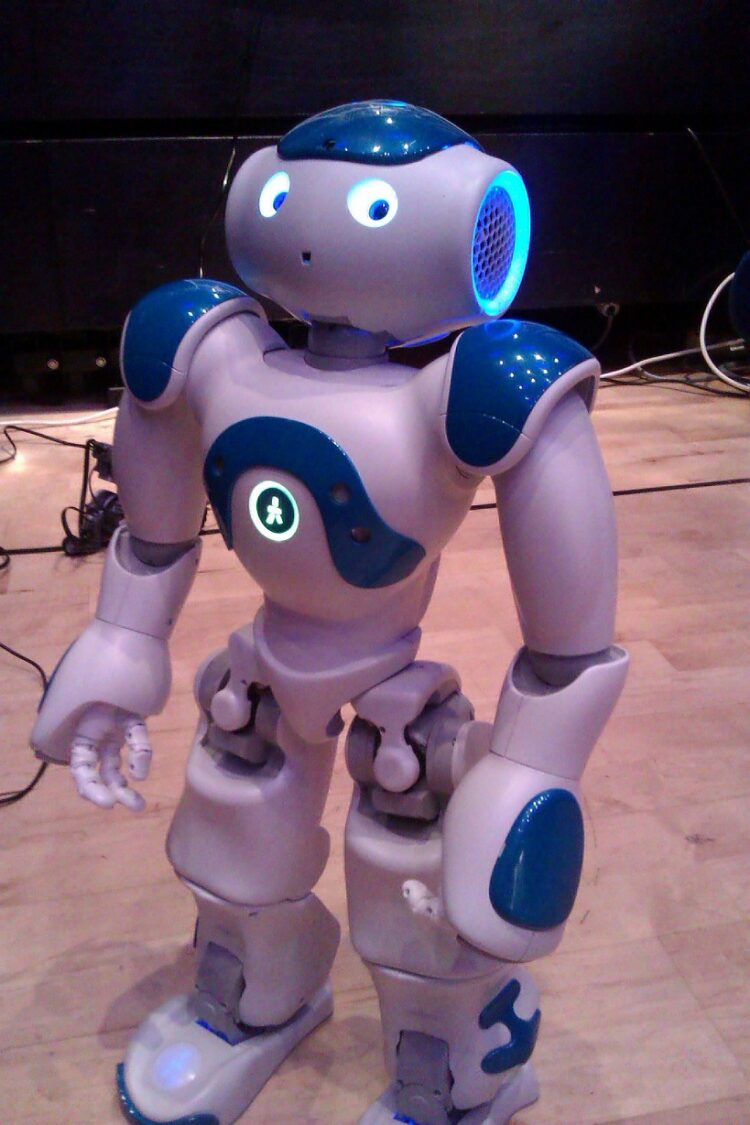 A couple of years ago, I had coffee with the Heather Knight, author of the infamous paper, “How Humans Respond To Robots.” When we met in 2014, we began our discussion with “in the future…” people will rely on robots for everyday tasks. However, today, the future is yesterday and social robots are beginning to live with us from Pepper to Jibo to now Zenbo.
A couple of years ago, I had coffee with the Heather Knight, author of the infamous paper, “How Humans Respond To Robots.” When we met in 2014, we began our discussion with “in the future…” people will rely on robots for everyday tasks. However, today, the future is yesterday and social robots are beginning to live with us from Pepper to Jibo to now Zenbo.
According to Knight’s research, “Robots do not require eyes, arms or legs for us to treat them like social agents. It turns out that we rapidly assess machine capabilities and personas instinctively, perhaps because machines have physical embodiments and frequently readable objectives. Sociability is our natural interface, to each other and to living creatures in general. As part of that innate behavior, we quickly seek to identify objects from agents. In fact, as social creatures, it is often our default behavior to anthropomorphize moving robots.”
A big question circulating the Internet is if a colleague is using an AI-personal assistant (e.g., amy@x.ai) does one have to be polite? On x.ai’s website, a testimonial from their venture backer, Dan Kozikowski of FirstMark Capital, even claims that all the people who interacted with “Amy” have found her “exceedingly polite,” thinking she is real. We have all experienced these moments: how many times have we spoken to Siri or Alexa as if “she” was a real person, like Scarlett Johanson?

It comes as little surprise that this has been a big year for social robots. Earlier, Jibo began production on its robot (above) to begin fulfilling its orders generated by one of the most successful crowdfunding campaigns ever—$3.7M worth of units ($749 each). The past 13 months since its launch, Amazon has shipped 3 million Echo devices to homes worldwide, creating a $100M ecosystem of apps and services around its Alexa speech recognition platform. Last week, Google announced its own home audio device to compete with Echo. The big difference between Jibo and Echo-like devices is the form-not-function factor, as the big eye screen creates a unique social bond with the user, in addition to displaying information and taking pictures.
The first progenitor of a commercial social robot was Aldebaran Robotics and their friendly humanoid looking robot, Pepper. The French company, Aldebaran, worked in secret for two years to create Pepper and forged a distribution agreement with the Japanese telecom giant SoftBank in 2014. The CEO of SoftBank is Masayoshi Son, founder and chairman of the telecom giant and also Japan’s richest person. Son has overseen the development of hundreds of new products as part of a vast conglomerate of mobile-phone carriers, Internet ventures, and media companies. In June 2014 at a press conference outside Tokyo, Son climbed onstage to unveil his favorite pet project, Pepper. Designed to be a companion in the home, it is the world’s first full-scale humanoid to be offered to consumers. SoftBank start selling limited quantities of Pepper in February of 2015 for less than $2,000 each plus a monthly subscription fee (see past posts). Taiwanese electronics manufacturer Foxconn, known for building iPhones and iPads for Apple, produces the robots.
The secret sauce of Pepper is that it contains an “emotion engine,” AI software that attempts to infer how a user is feeling based on facial expressions, tone of voice, and speech, and allows the robot to respond accordingly. If a user arrives home and looks a bit down, Pepper will plays the his or her favorite song.
According to Son, “We want to have a robot that maximizes joy and minimizes sadness.”
The history of Pepper began more than 6 years ago, when Masayoshi Son decided he wanted to be in the robot business and sent emissaries to evaluate the world’s top robotics companies. Aldebaran, despite being relatively small, stood out in its ability to design robots that offer a highly interactive experience. Aldebaran’s flagship robot at the time was a knee-high humanoid called Nao. To date, more than 6,000 Naos have been sold to research labs, schools, and hospitals in 70 countries.
“The most important role of robots will be as kind and emotional companions to enhance our daily lives, to bring happiness, to surprise us, to help people grow,” said Aldebaran founder and CEO Bruno Maisonnier in 2014.
Son and Maisonnier met and realized they shared a vision to take robots out of the lab and incorporate them into everyday life. Together, they discovered they could do something for robotics “that could be really world changing,” Maisonnier recalls.
In early 2012, SoftBank acquired a majority stake in Aldebaran and agreed to fund the company’s growth. For Aldebaran, the acquisition meant that nearly overnight, the company had to shift its focus to the Pepper project.
A team of designers and artists created a sleek, friendly looking shell for the robot. Then, the engineering team stuffed its body with 20 electric motors, an Intel Atom–based computer, two cameras, a 3-D sensor, four microphones, and a lithium-ion battery that lets Pepper run for 12 hours. A tablet on the robot’s chest displays information and provides another way to interact with the robot.
In Aldebaran’s first trip to SoftBank’s Tokyo headquarters, in April 2012, the engineers gathered in a room filled with Japanese executives. Suddenly, the doors opened and everyone went silent. Masayoshi Son entered, took a seat, and stared at the Pepper prototype in front of him. The first demo was simple enough: The engineers turned the robot on and it did a little dance. Almost immediately, Son was “like a kid,” beaming at the robot. Son’s excitement led to SoftBank acquiring 100 percent of the company by 2015.
Today, the vision of Son and Maisonnier has given way to an industry of affordable social robots. While Softbank is still the leader with its enterprise applications, that has been written about extensively on this blog, recently a number of upstarts are competing for the home market at lower price points. In addition to Jibo, the latest robot to enter the marketplace for less then $1,000 is Asus Computer’s Zenbo for $599.
Announced yesterday at the Computex electronics show in Taiwan, Zenbo aims to start shipping in the next 9-12 months. Presenting the product early is deliberate on Asus’ end, as it hopes to attract developers to work on apps for Zenbo to create robust ecosystem in place for next year’s commercial release.
According to Jonney Shih, Asus’ chairman,” Zenbo will enable robotic computing for every household.”
Clearly, the price point is very user-friendly. The product demo also illustrated how its MacG4-looking white orbs hide a set of wheels that enable it to move around the house with ease while entertaining the kids with stories or performing household tasks. While Jibo’s promotional videos illustrate similar concepts, Jibo doesn’t move and is tethered to the wall with an AC plug.
Attached to the top of the orb via a shiny metal arm is the robot’s face, an oval-shaped screen with a built-in display that can show information or, in true robot fashion, eyes and a mouth (vs. the cycloptic look of its closest competitor). It also includes a camera, which can detect faces, take photos and videos, and offer remote home monitoring via an app.
Asus Computers envisions the monitoring capabilities will be especially useful for the elderly. In the video promo the grandfather falls down and Zenbo immediately notifies his emergency contact (his daughter). Zenbo comes with a library of books, interactive games, and an encyclopedia. In addition, it anticipates that added features, such as the ability to control connected home devices, will come through its app developer network.
Zenbo represents the evolution of earlier predecessors of a nascent industry. While tapping into the popularity of Echo and capabilities of Pepper at the cost of an iPad, Asus could quickly become the DJI of social robots. However, a lot can happen in a year in the robotics space; possibly by the time Zenbo ships, it will already be leapfrogged by another company. In related news, Toyota is rumored to buy Boston Dynamics from Google, hmmm…
Image credit: CC by Duncan Hull



